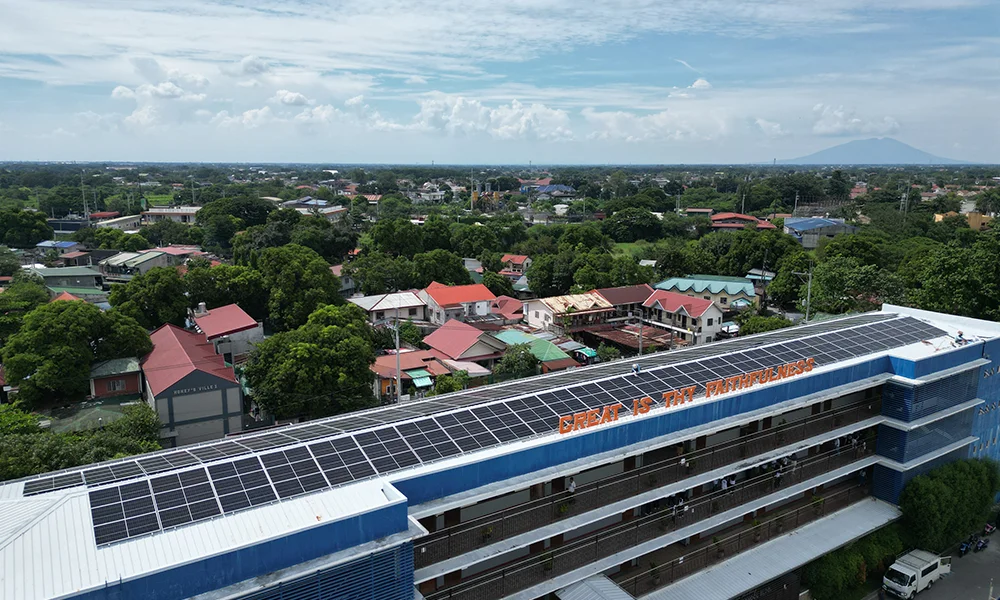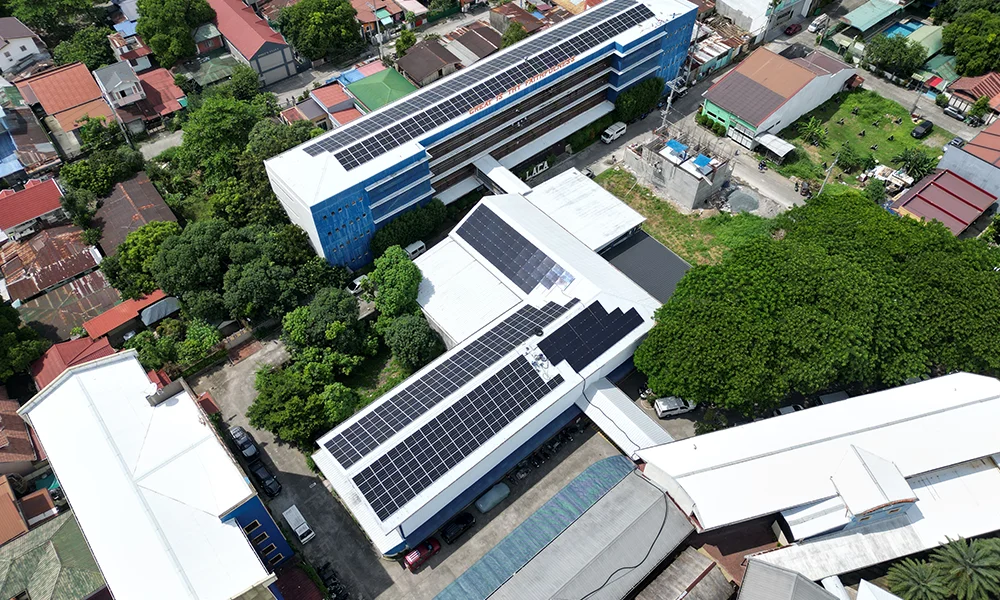Renewable energy solutions Philippines deliver a clear win for schools that run roughly 221 teaching days each year. Your classrooms need lights, air‑conditioning, and IT gear all day. By turning rooftops into mini power plants and using net metering to trade surplus on weekends and vacations, you lock in long‑term savings and protect tuition from steep utility charges.
Rising bills, shrinking budgets
Grid power in the Philippines sits near ₱11.00 per kWh. A 100 kW solar array on a mid‑size campus will create about 140,000 kWh each year:
- Weekday self‑use (70 %) – 98,000 kWh, wiping out nearly ₱1.1 million in purchases
- Weekend + holiday export (30 %) – 42,000 kWh, earning roughly ₱250,000 in credits at ₱6.00 per kWh
Total annual benefit lands at ₱1.35 million. Payback sits under four years, well inside the 30‑year panel life.
Proof from real campuses
Solaren systems reliably power many schools. Holy Angel University, Creston Academy, North Eastern Colleges, Living Angel Christian Academy and Osias Colleges are a few examples. One 200 kW rooftop cut electric spend by 100 %. Freed cash funded new science labs and scholarships, turning an infrastructure upgrade into direct gains for students, and of course, for the owners.
Net metering made simple
- Size limit – Match solar capacity to peak demand or go smaller.
- Bi‑directional meter – Tracks import and export separately.
- Monthly netting – Grid charges minus solar export credits equal the bill.
- Annual cash‑out – Any carry‑over credit rolls forward.
What could your school achieve once power bills drop by nearly half, or even zero?
Design tips tuned to the school calendar
- Oversized for peak summer sun to offset cloudy monsoon weeks.
- East‑west panel tilt on flat roofs can spread production from the first bell to after‑school hours.
- Microinverters keep output strong when flagpoles or trees cast partial shade.
- Battery‑ready wiring lets you prepare for the future.
Five hidden wins beyond savings
- Stable tuition planning, easing pressure on parents.
- Stronger brand for eco‑minded donors and corporate partners.
- Live energy dashboards for hands‑on STEM lessons.
- Cooler classrooms from rooftop shade, raising attention spans.
- Potential backup power for lights, servers, and water pumps during brownouts.
Step‑by‑step road map
| Stage | Key action | Typical timing |
| Site check | Structural review, shade study, load profile | 1 day |
| Proposal | Layout, yield forecast, cash‑flow sheet | 1 week |
| Board sign‑off | Finance and facilities agree | 2 – 4 weeks |
| Permits + net meter filing | Solaren handles papers | 30 – 45 days |
| Installation | Panels, wiring, test | 10 – 20 days, no class stoppage |
| Switch‑on | Utility witness test, staff training | 1 day |
Funding paths that work
- Zero‑down lease – Monthly lease stays below past electric spend.
- Green loan and DepEd grant pairing – Low‑rate bank loan plus energy efficiency support.
- Alumni Sun Fund – Graduates chip in for panels named after their batch.
Common questions: Renewable energy solutions Philippines
- Cloudy exam week impact?
The grid fills gaps instantly. Net metering spreads that dip over the month, leaving ROI steady.
- Maintenance load?
A gentle wash each semester keeps output high. Monitoring sends alerts for any drop, so staff act fast.
- Roof heat effect?
Panels shade concrete or metal sheets, trimming indoor temperature by up to 3 °C.
- Fire safety?
Rapid shutdown gear kills current within seconds if trouble appears, meeting the latest electrical codes.
Action checklist for school leaders
- Gather the last 12 months of bills.
- Note the roof space, carports, and open grounds.
- Invite an accredited contractor under Renewable Energy Solutions Philippines for a free audit.
- Present the proposal at the next board meeting and frame solar as a long‑term asset, not a one‑time expense.









